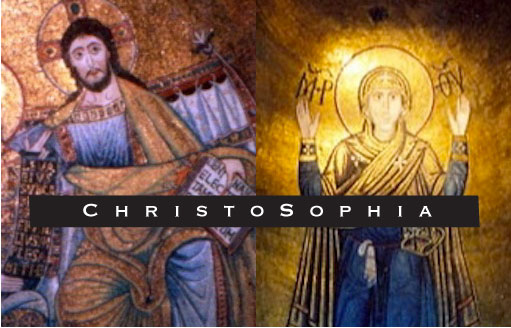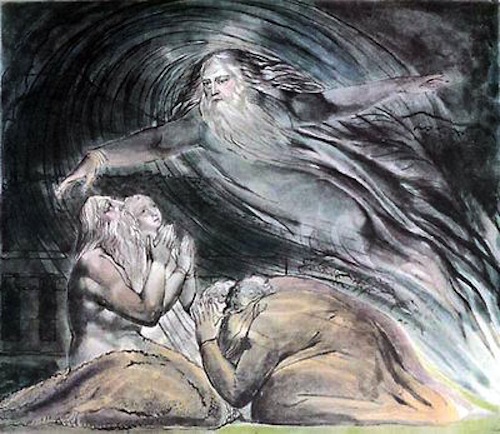.

.







Jung's Answer to Job
By Cynthia Avens
My dear friend Sally Rhea, who is a member of our ChristoSophia Community, recently encouraged me to read Carl Jung’s Answer to Job. I knew that this was especially important since it had been on my “reading list” for the past few years! Sally is very in tune with the currents of synchronicity, so obviously this was the time to finally read it. And I was right: although Jung wrote Answer to Job over fifty years ago, I found it to be a profound expression of the powerful archetypal energies that are influencing our world today.

Essentially the issue confronted by the Biblical Job is the age-old question that continues to plague us: why do bad things happen to good people? Many religions answer with a dualistic worldview that perceives the forces of Good or Light in a cosmic struggle with the powers of Evil or Darkness, such as the common Christian belief in the opposition of God and Satan. But if God is truly One, how can evil exist apart from God? This is the dilemma that we encounter in Job
The depth and complexity of Jung’s exposition will require much more reflection on my part, but I feel the numinous energy pouring through his words as he gives Sophia a central role in the “answer” to Job. The Biblical book of Job is part of the Jewish Wisdom literature that was written during the fifth to first century BCE. The Wisdom literature brings to human consciousness the figure of Sophia (Wisdom) – She who was the first creation of God and co-creator of the Earth (Proverbs 8). Jung says that with this writing “The reappearance of Sophia in the heavenly regions points to a coming act of creation…A momentous change is imminent. God desires to regenerate himself in the mystery of the heavenly nuptials…and become man.” Thus it seems that the Wisdom literature is a portent of the Incarnation of Christ. Job asks, “But where shall wisdom be found?” The answer is: “In Christ."
Jung says, “Although the birth of Christ is an event that occurred but once in history, it has always existed in eternity…As God he has always been God, and as the son of Mary, who is plainly a copy of Sophia, he is the Logos who, like Sophia, is a master workman, as stated by the gospel according to St. John. This identity of mother and son is borne out over and over again in the myths.” The eternal process in the spiritual realms of the Pleroma – the sacred marriage that gives birth to the divine child – is repeated over and over in the realm of time and space. We find this archetypal motif in the myths of many cultures, which may be seen as various acts in the timeless “divine drama.” In Christianity this archetype expresses itself in the union of God and the Virgin Mary (as Sophia) giving birth to the Christ. As Jung points out, he is one with his “mother” in accordance with the mythological pattern of son/mother identity (i.e. Christ-Sophia.) The Incarnation of Christ-Sophia reveals God’s “answer to Job.”
Jung emphasizes that “God wanted to become man, and still wants to.” This is his explanation for John’s vision in the book of Revelation that foresees “a second birth of a son from the mother Sophia.” The divine birth is characterized by the union of the opposites, which for Jung is the essence of the psychological process of individuation and expressed as the archetype of the Self. The birth of the divine child may be interpreted as a further stage in the evolution of human consciousness – the transformation that results in the realization of the Self – the process described as “individuation” in psychological terminology and “theosis” in spiritual language. The crucial importance for the re-emergence of Sophia into human consciousness is that only then can she be consciously united with the image of the Father-God and then – as MotherFather God – give birth to the “divine child, “ the Christ-Self within the soul. This is the mythic journey of each individual soul and of the collective Human Soul.
As Jung points out, the first prefiguration of God’s desire to become human was in Adam, who was the “image” of God. This was followed by the full incarnation of God in Jesus Christ (the “second Adam”), who manifested the “likeness” of God. Mythologically this depicts the potential of our own soul as we spiritually evolve from the “image” of God at birth to the “likeness” of God that we achieve through the arduous task of Self-Realization. The incarnation of God will only be completed when the divine child is born within every human heart. This is the mythological meaning of the Second Coming and the fulfillment of the “new creation” in Christ.
“The Apocalypse closes, like the classic individuation process, with the symbol of the hieros gamos, the marriage of the son with the mother-bride…This is the programme for the Christian aeon which must be fulfilled before God can incarnate in the creaturely man.” This statement by Jung explains why he views the dogma of the Assumption of Mary, announced by the Pope in 1950, as extremely significant for our world. Jung comments on the papal decree that Mary is bodily assumed into Heaven: “Mary as the bride is united with the son in the heavenly bridal chamber, and, as Sophia, with the Godhead.” The transfigured Mary is synonymous with Sophia. Jung sees the profound importance of this dogma in the symbolic fulfillment of the vision of Revelation that foretells the incarnation of God within humanity.
The extreme urgency of this task is shown in Jung’s statement: “”Everything now depends on man: immense power of destruction is given into his hand, and the question is whether he can resist the will to use it, and can temper his will with the spirit of love and wisdom.” Here Jung expresses his terror of the apocalyptic horrors that mankind may unleash if we do not unite the opposites within and instead continue to project our darkness outwardly. Although the book of Revelation demands a mythological interpretation, it certainly can also be seen as a vision of the potential for a literal destruction of the world, especially in this era of nuclear weapons. The vision seems to portray the possibilities that lay before the human race, which are coming to a climax in our age: the potential horrors of world-wide destruction, but also the potential for the sacred marriage and the birth of the divine child. Universal destruction can only be avoided if the “spirit of love and wisdom”– ChristoSophia – incarnates within humanity.
What will be our answer to Job? Will we open our hearts so that the inner sacred marriage can take place? Will we open our minds so that a higher level of consciousness can develop? Will we work diligently to withdraw our projections of fear and hatred, and unite the opposites of light and dark within? Will we as a human race unite to resolve the terrible conflicts that are tearing us apart? I truly believe that our only hope for the future lies in our collective affirmative response to the numinous power of the “continuing incarnation of God” within us.
Back to top
The Wisdom
literature brings to human
consciousness the figure of Sophia (Wisdom) – She who was the first creation of God and co-creator of the Earth (Proverbs 8). Jung says that with this writing “The reappearance of Sophia in the heavenly regions points to a coming act of creation…
A momentous change
is imminent..."


